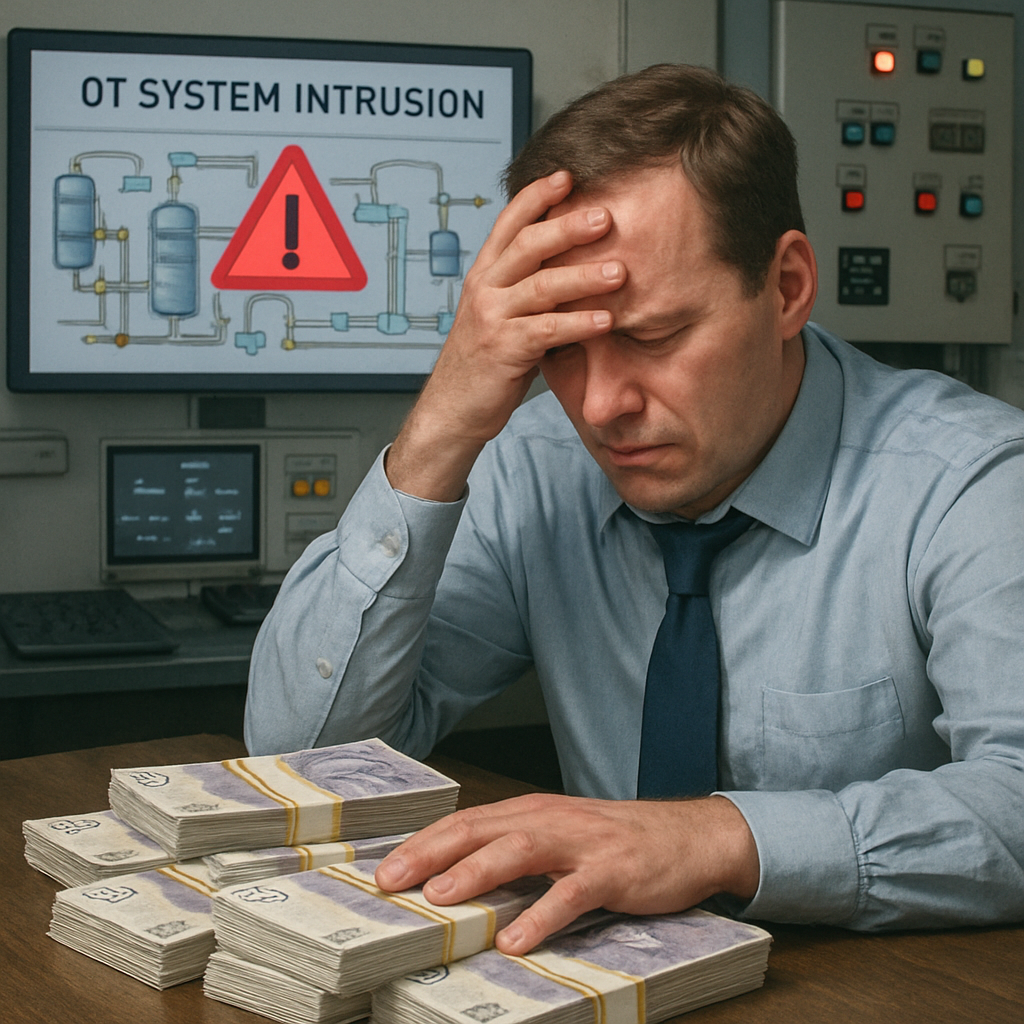The Pivotal Role of Identity in OT Cybersecurity
![]()
Operational Technology (OT) environments, which control critical infrastructure and industrial processes, are increasingly targeted by cyber threats. Traditionally, OT cybersecurity strategies have heavily focused on network security. However, identity also plays a significant and often overlooked role. This article explores the critical importance of identity in OT cybersecurity, challenging the traditional network-centric view and emphasizing how identity is essential for a robust security posture, particularly in the context of Zero Trust Architecture.
The Evolving OT Cybersecurity Landscape
Historically, OT systems were isolated from external networks, relying on physical security and "security by obscurity." However, the increasing convergence of IT and OT networks, driven by Industrial Internet of Things (IIoT) and digital transformation, has exposed OT environments to a broader range of cyber threats.
According to Gartner, by 2025, cyber attackers will have weaponized operational technology environments to successfully harm or kill humans. This alarming statistic underscores the urgency of bolstering OT cybersecurity measures.
Limitations of a Network-Centric Approach
While network security measures like firewalls, intrusion detection systems, and network segmentation are essential, they are not sufficient on their own. Focusing solely on network security leaves organizations vulnerable to insider threats, compromised credentials, and lateral movement within the OT environment. These network-centric security models often fail to address the fundamental question:
"Who is accessing these systems and what are they authorized to do?"
The Critical Role of Identity in OT
Identity management in OT involves verifying and authorizing users, devices, and applications. It is essential for:
- Authentication and Authorisation: Authenticate and authorising users and devices based on all available data points, such as user identity, location, device health, service or workload, data classification, and anomalies
- Least privilege access: Limiting user access with just-in-time and just-enough access, risk-based adaptive policies, and data protection to help secure both data and productivity.
- Auditability: Tracking who accessed what, when, and from where, providing a detailed audit trail for investigations and compliance.
- Insider threat mitigation: Reducing the risk of malicious activities by internal actors.
- Incident response: Quickly identifying and isolating compromised accounts and devices.

According to a Verizon Data Breach Investigations Report, 85% of breaches involved the human element. This highlights the critical importance of identity and access management in preventing and mitigating cyberattacks.
Challenges in OT Identity Management
mplementing identity management in OT faces unique challenges:
- Legacy systems: Many OT environments rely on older systems that lack modern security features, including robust identity management capabilities.
- Operational constraints: Real-time operations and the need for high availability often limit the ability to implement security measures that could disrupt processes.
- Diverse devices: OT environments contain a wide range of devices, from PLCs and sensors to HMIs and engineering workstations, each with varying security capabilities.
- Lack of standardization: OT environments often lack standardized protocols for identity and access management, making integration challenging.
Best Practices for OT Identity Management
To address these challenges, organizations should adopt the following best practices:
- Centralized identity management: Implement a centralized system to manage identities and access rights across the OT environment.
- Multi-factor authentication (MFA): Enforce MFA for all access to critical systems, including remote access.
- Role-based access control (RBAC): Assign permissions based on roles, ensuring that users and devices have only the access they need to perform their duties.
- Device authentication: Authenticate devices to ensure that only authorized devices can connect to the network and access critical systems.
- Regular auditing and monitoring: Continuously monitor access logs and audit trails to detect anomalies and unauthorized activities.
Here is a table outlining the key steps for implementing identity management:
|
Step |
Description |
Responsible Party |
| 1 |
Identify all assets and users |
OT Security Team |
| 2 |
Implement centralized identity management system |
IT & OT Teams |
| 3 |
Enforce multi-factor authentication |
All Users |
| 4 |
Establish role-based access control |
Security Administrators |
| 5 |
Conduct regular audits |
Internal Audit Team |
Zero Trust Starts With Identity
NIST articulates the pillars of Zero Trust starting with Identity. Identity is a cornerstone of Zero Trust Architecture, which is based on the principle of "never trust, always verify." In a Zero Trust environment, no user or device is inherently trusted, regardless of their location or network. Access is granted only after verifying the identity of the user or device, their current context, and the security posture of the endpoint.

Identity plays a crucial role in Zero Trust by:
- Establishing identity as the security perimeter: Shifting the focus from network perimeters to individual identities.
- Enabling granular access control: Allowing for fine-grained control over who can access what resources and under what conditions.
- Providing continuous authentication and authorization: Requiring users and devices to continually authenticate and authorize throughout their sessions.
By prioritizing identity in OT cybersecurity, organizations can lay the foundation for a Zero Trust Architecture, which is essential for protecting against advanced threats and mitigating the risk of cyberattacks.
Zero Trust maturity journey
Different organizations may have different starting points and goals for their Zero Trust maturity journey, depending on their current security posture, business needs, and challenges. However, a common approach is to use a maturity model that provides a framework for measuring the current state and desired outcomes of Zero Trust implementation. A maturity model can help organizations identify the gaps and opportunities for improvement, prioritize the security efforts and investments, and track the progress and impact of Zero Trust solutions.
Below you’ll find a path to transition to a Zero Trust architecture for Identity.

Why Identity Can No Longer Be Ignored
While network security remains a critical component of OT cybersecurity, focusing solely on it is no longer sufficient. Identity plays a pivotal role in securing OT environments by ensuring that only authorized personnel and devices can access critical systems. By implementing robust identity management practices and embracing Zero Trust principles, organizations can significantly reduce their risk of cyberattacks and ensure the safety, reliability, and resilience of their operations. Identity is not just a component of OT cybersecurity; it is the foundation for a strong and resilient security posture in the face of evolving threats.
--------------------

Author: Vinny Sagar, Field Strategist, swIDch
With over 15 years of experience in pre-sales, consulting and software development in the Identity and Cyber Security space Vinny has helped many clients across various industries and regions to design and deploy Zero Trust solutions that meet their specific needs and challenges.
--------------------

swIDch will continue its quest to innovate and pioneer next-generation authentication solutions. To stay up-to-date with the latest trends sign up to our newsletter and check out our latest solutions.

In late October 2025, the Canadian Centre for Cyber Security issued an unusual public alert. Several of the country’s

A recent cyberattack on Jaguar Land Rover forced the temporary closure of its Solihull, Halewood and Wolverhampton

In October 2025, the European Union Agency for Cybersecurity (ENISA) reported that 18.2 % of all recorded cyber
Looking to stay up-to-date with our latest news?